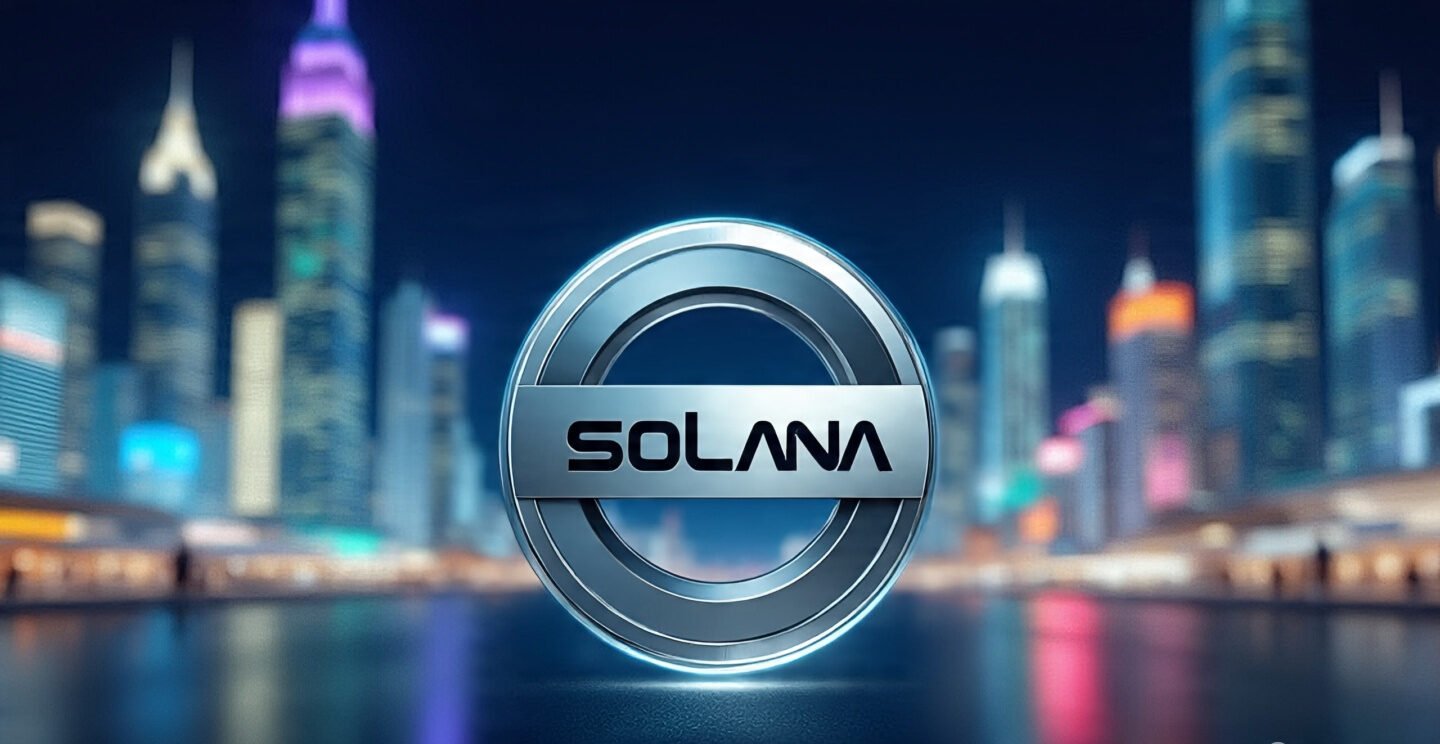The cryptocurrency landscape is undergoing a paradigm shift as Solana treasury companies emerge as potential game changers in the digital asset ecosystem. While Bitcoin (BTC) and Ethereum (ETH) have long dominated the corporate treasury space, 2025 may mark a turning point where Solana-based treasury solutions capture significant market share. This transformation isn’t merely speculative – fundamental technological advantages, cost efficiencies, and evolving institutional needs drive it.
Corporate treasury management has traditionally relied on established cryptocurrencies like Bitcoin Price for store-of-value purposes and Ethereum for smart contract functionality. However, the limitations of these legacy networks – including high transaction fees, slow processing times, and scalability constraints – have created opportunities for next-generation blockchain solutions. Solana’s treasury ecosystem offers compelling alternatives that address these pain points while providing enhanced functionality for modern businesses.
The shift toward Solana treasury adoption represents more than just a technological upgrade; it signals a fundamental change in how companies approach digital asset management. As organizations seek more efficient, cost-effective, and scalable solutions for their treasury operations, Solana’s blockchain infrastructure presents unique advantages that could reshape the competitive landscape in 2025 and beyond.
Understanding Solana’s Treasury Ecosystem
What Are Solana Treasury Companies?
Solana treasury companies represent a new category of financial service providers that leverage Solana’s high-performance blockchain to offer corporate treasury solutions. These companies specialize in helping businesses manage their digital assets, execute payments, and optimize their cash management strategies using Solana’s native capabilities.
Unlike traditional treasury services built on Bitcoin or Ethereum, Solana treasury providers can offer real-time settlement, programmable money features, and sophisticated financial instruments at a fraction of the cost. This ecosystem comprises custody providers, payment processors, yield generation platforms, and integrated financial management tools specifically designed for corporate clients.
Key Players in the Solana Treasury Space
The Solana treasury ecosystem comprises various specialized service providers, each addressing different aspects of corporate financial management. Leading Solana treasury companies offer custody solutions with institutional-grade security, DeFi integration platforms that enable yield optimization, and payment rails that facilitate efficient cross-border transactions.
These providers differentiate themselves by leveraging Solana’s technical advantages while maintaining the compliance and security standards required by institutional clients. The result is a comprehensive suite of treasury services that can compete directly with traditional Bitcoin and Ethereum-based solutions.
Technical Advantages: Why Solana Leads

Speed and Scalability
Solana’s blockchain performance fundamentally outclasses both Bitcoin and Ethereum in terms of transaction throughput and confirmation times. While Bitcoin processes approximately seven transactions per second and Ethereum handles around 15, Solana can process over 50,000 transactions per second with sub-second finality.
This dramatic performance difference translates directly into operational advantages for treasury companies. Real-time settlement capabilities mean businesses can execute complex financial operations, manage cash flows, and respond to market opportunities with unprecedented speed. The scalability ensures that even as adoption grows, Solana treasury solutions can maintain consistent performance levels.
Cost Efficiency
Transaction costs represent a critical factor in corporate treasury management, and Solana’s fee structure provides substantial advantages over competitors. While Bitcoin transactions can cost $20-50 during peak periods and Ethereum fees can exceed $100 for complex operations, Solana transactions typically cost less than $0.01.
This cost efficiency enables Solana treasury companies to offer services that would be economically unfeasible on other networks. Micro-transactions, frequent rebalancing, automated yield strategies, and real-time reporting become practical when transaction costs are negligible.
Developer Ecosystem and Innovation
The Solana development ecosystem continues to attract top-tier talent and innovative projects, creating a virtuous cycle of improvement and adoption. The network’s developer-friendly architecture and comprehensive tooling support enable treasury companies to rapidly build sophisticated solutions.
This technical foundation supports advanced features, such as programmable payments, automated compliance reporting, multi-signature treasury management, and integrated DeFi strategies, which would be prohibitively expensive or slow on other networks.
Market Trends Favoring Solana
Institutional Adoption Patterns
Institutional crypto adoption patterns increasingly favor networks that can demonstrate clear operational advantages. As companies move beyond simple Bitcoin holdings to more sophisticated digital asset strategies, they require infrastructure that can support complex operations efficiently. Solana’s institutional adoption has accelerated as major corporations recognize the network’s potential for treasury applications. This trend reflects a broader shift from store-of-value-focused strategies to operational efficiency-driven approaches in corporate cryptocurrency management.
DeFi Integration Opportunities

The decentralized finance (DeFi) sector on Solana presents treasury companies with unique opportunities to generate yield and optimize their cash management strategies. Unlike Ethereum’s congested and expensive DeFi ecosystem, Solana’s DeFi protocols provide accessible and cost-effective options for institutional participants.
Treasury yield optimization through Solana-based DeFi protocols can significantly enhance returns while maintaining appropriate risk profiles. This capability represents a significant competitive advantage for Solana treasury providers targeting yield-conscious corporate clients.
Regulatory Clarity and Compliance
Regulatory developments in 2025 are expected to favor blockchain networks that can demonstrate clear compliance capabilities and operational transparency. Solana’s architecture supports sophisticated compliance tooling and reporting capabilities that meet evolving regulatory requirements.
Solana treasury companies can leverage these capabilities to offer services that satisfy regulatory demands while maintaining operational efficiency. This combination positions them favorably as regulatory scrutiny of corporate cryptocurrency holdings intensifies.
Challenges for Bitcoin and Ethereum
Bitcoin’s Limitations in Treasury Applications
While Bitcoin treasury adoption continues among companies seeking exposure as a store of value, the network’s limitations become apparent in operational contexts. Bitcoin’s transaction capacity and confirmation times make it unsuitable for real-time treasury management applications.
The lack of native smart contract functionality means that Bitcoin treasury solutions require additional infrastructure layers, which increase complexity and costs. These limitations restrict Bitcoin’s utility to primarily serving as a store of value rather than a comprehensive treasury management tool.
Ethereum’s Scalability and Cost Issues
Ethereum’s gas fees and network congestion create significant barriers for corporate treasury applications. During periods of high network activity, Ethereum transaction costs can make routine treasury operations economically unfeasible.
While Ethereum 2.0 improvements and layer-2 solutions address some scalability issues, these solutions introduce complexity and may not deliver the seamless user experience that corporate clients expect from their treasury management systems.
Investment and Growth Projections
Market Size and Opportunity
The corporate treasury cryptocurrency market is projected to experience substantial growth in 2025, with an increasing number of companies incorporating digital assets into their cash management strategies. Solana treasury solutions are well-positioned to capture a significant portion of this expanding market.
Market analysis suggests that Solana-based treasury services could achieve substantial market share gains as companies prioritize operational efficiency and cost-effectiveness in their digital asset strategies. The total addressable market for these services continues to expand as global crypto adoption accelerates.
Venture Capital and Institutional Investment
Venture Capital investment in Solana ecosystem projects, particularly those focused on treasury solutions, has increased significantly. This funding enables the rapid development and deployment of sophisticated treasury management platforms that can directly compete with established solutions.
Institutional investment in Solana-based projects indicates growing confidence in the network’s long-term viability for enterprise applications. This Capital influx supports the development of mature, enterprise-grade treasury solutions, which are necessary for widespread corporate adoption.
Future Outlook and Predictions
2025 Market Positioning
By 2025, Solana treasury companies are positioned to achieve significant market penetration as businesses increasingly prioritize operational efficiency in their cryptocurrency treasury management. The combination of technical advantages, cost benefits, and expanding ecosystem support creates favorable conditions for rapid adoption.
Market predictions suggest that companies currently using Bitcoin or Ethereum-based treasury solutions may consider migrating to Solana alternatives to reduce costs and enhance operational efficiency. This migration could accelerate as the benefits of Solana’s infrastructure become more widely recognized.
Long-term Competitive Advantages
The long-term outlook for Solana treasury solutions remains positive due to the network’s fundamental architectural advantages. Unlike competitors that face inherent scalability constraints, Solana’s design can accommodate massive growth while maintaining performance and cost advantages.
Competitive positioning analysis suggests that Solana treasury companies may establish sustainable advantages that become increasingly difficult for Bitcoin and Ethereum-based solutions to overcome, particularly as corporate clients become more sophisticated in their evaluation of blockchain infrastructure capabilities.
Conclusion
The landscape for corporate cryptocurrency treasury management is evolving rapidly, with Solana treasury companies emerging as formidable competitors to established Bitcoin and Ethereum-based solutions. The combination of superior technical performance, dramatic cost advantages, and expanding ecosystem support positions Solana as a potential leader in the treasury space for 2025.
While Bitcoin and Ethereum will likely continue to play significant roles in corporate digital asset strategies, their limitations in operational applications create opportunities for Solana-based alternatives. Companies seeking efficient, cost-effective, and scalable treasury solutions may increasingly turn to Solana providers that can deliver superior performance at lower costs.
The success of Solana treasury companies in 2025 will ultimately depend on their ability to deliver enterprise-grade solutions that meet the evolving needs of corporate clients. Current trends suggest they are well-positioned to capture significant market share and potentially reshape the competitive dynamics of the corporate treasury cryptocurrency market.

